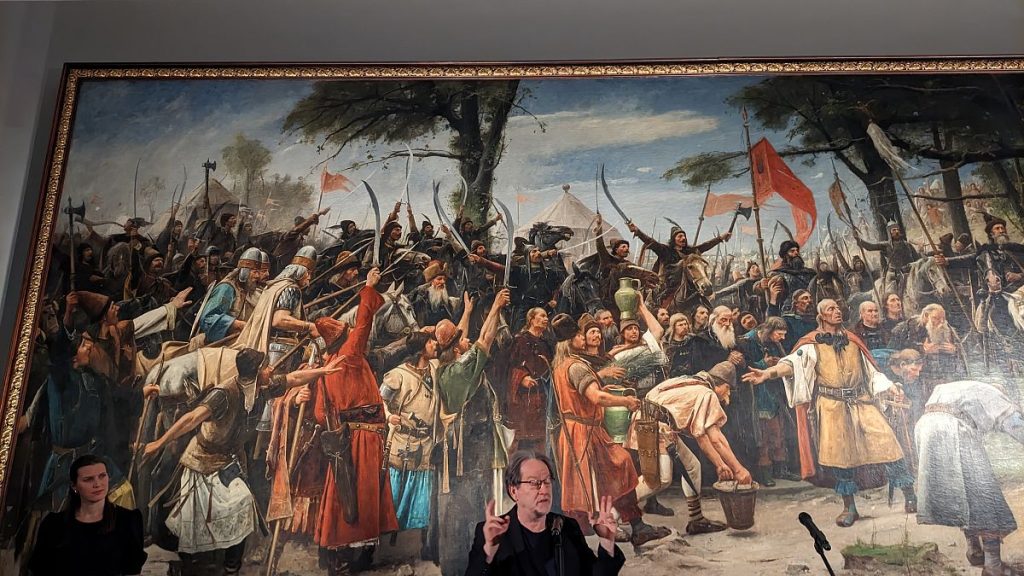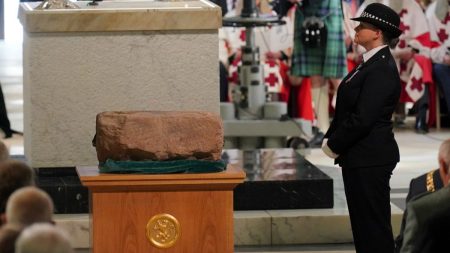The Museum of Fine Arts in Budapest is honoring Mihály Munkácsy, a prominent Hungarian painter, with a comprehensive exhibition showcasing his artistic journey on the occasion of his 180th birth anniversary and the 125th anniversary of his death. This major exhibition titled “Munkácsy – Story of a worldwide sensation” will feature over a hundred pieces of Munkácsy’s artwork, including paintings, sketches, archival photographs, and memorabilia, alongside works from his contemporaries. Scheduled to open on November 27, the exhibition is set to take place in six distinct rooms where the narrative of Munkácsy’s career will unfold, revealing not just his artistic style but also the broader socio-economic and cultural contexts that influenced his work.
Among the highlights of the exhibition are iconic realist paintings such as “The Burying Butler” and vast masterpieces like “Golgotha,” which has been transported from Debrecen specifically for this showcase. The exhibition aims to illuminate Munkácsy’s remarkable status during his lifetime, illustrating how he ascended to prominence as a successful artist. According to László Baán, the Director General of the National Gallery, Munkácsy’s rise was not solely attributable to his artistic brilliance; it was equally reliant on the support he received from patrons and individuals who recognized his talent. Notably, it was his French wife and influential art dealer Sedelmayer who played pivotal roles in introducing him to Parisian art circles and facilitating the creation of iconic themes, such as the life of Jesus, that garnered international acclaim.
Acquiring Munkácsy’s paintings for the exhibition posed significant challenges, particularly in securing large-scale works from private and public collections across borders. Curator Réka Krasznai noted that the logistical hurdles were particularly pronounced for transporting monumental pieces like “Golgotha” and “The Conquest of Hungary.” Despite these difficulties, the exhibition also benefits from past major Munkácsy exhibitions, such as the 1952 showcase at the Kunsthalle and the 2005 display at the National Gallery, which provided valuable insights and references for curating the current exhibition. Krasznai’s approach is to synthesize lessons learned from these earlier exhibitions to create a comprehensive portrayal of Munkácsy’s vast oeuvre, encompassing not only significant works but also hidden masterpieces located in private hands.
The exhibition is carefully designed to guide visitors thematically and chronologically through Munkácsy’s artistic evolution. Each of the six rooms focuses on different aspects of his work and life, drawing connections to the artistic and cultural movements of his time. Visitors can expect to encounter an array of styles and techniques that reflect Munkácsy’s rich and varied career, from early realist endeavors to grand historical narratives. By placing these works in context, the exhibition seeks to highlight the interplay between Munkácsy’s artistry and the influences that shaped his vision, all while commemorating his lasting impact on the world of fine arts.
The exhibition at the Museum of Fine Arts is set to run until the end of March 2025, allowing ample time for art enthusiasts, students, and the general public to explore Munkácsy’s significant contributions. As the museum delves deep into Munkácsy’s narrative, it provides a unique opportunity for attendees to engage with the history and intricacies of 19th-century art through the lens of one of Hungary’s most celebrated painters. The exhibition serves not only as a tribute to Munkácsy’s legacy but also as a platform for discussing the broader dynamics of art in relation to its historical and cultural contexts, inviting reflection on how society interacts with artistic expression.
Through this exhibition, the Museum of Fine Arts showcases its commitment to preserving and promoting art that has shaped Hungarian culture. Moreover, by inviting discussions on the support systems that artists require to flourish, the museum contributes to a larger dialogue about the importance of patronage in the arts. This retrospective of Mihály Munkácsy’s life and work invites viewers to appreciate not just the beauty of the paintings but also the intricate stories and relationships that brought them into existence. As visitors navigate the exhibition, they will gain insights into the motivational forces behind Munkácsy’s masterpieces and the societal shifts within which his art was created, ultimately enriching their understanding of both the artist and his era.














